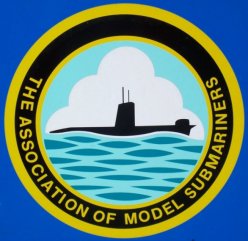I'm interested that you have had the same experience with stepper motors - so not enough torque.
Although in general terms I wouldn't believe everything you read on the internet. (A whole lot of fibbing going on in various other places!)
It is a good time of year (in the Northern hemisphere anyway, 6 deg C outside) to get going with Arduinos again.
If you are using the, rather useful, 16 x 2 lcd displays could I recommend these. I have just ordered and tested a batch of 6 from eBay:
1.5'' Blue IIC I2C TWI 1602 16x2 Serial LCD Module Display for Arduino New LU
( 192012748949 )
About £2 each.
These are serial (i2c) connected ones so only 2 signal connectors rather than the usual "tangle."
I give a sketch for a temperature/humidity display because it mentions the lcd library to use and also a useful comment about lcd addresses. (They seem to be randomly provided.)
/* YourDuino.com Example Software Sketch
16 character 2 line I2C Display
Backpack Interface labelled "A0 A1 A2" at lower right.
..and
Backpack Interface labelled "YwRobot Arduino LCM1602 IIC V1"
MOST use address 0x27, a FEW use 0x3F
terry@yourduino.com */
/*-----( Import needed libraries )-----*/
//David's note look at: https://arduino-info.wikispaces.com/LCD-Blue-I2C#v1
#include <Wire.h> // Comes with Arduino IDE
// Get the LCD I2C Library here:
// https://bitbucket.org/fmalpartida/new-liquidcrystal/downloads
// Move any other LCD libraries to another folder or delete them
// See Library "Docs" folder for possible commands etc.
#include <LiquidCrystal_I2C.h>
#include "DHT.h"
#define DHTPIN 2 // what pin we're connected to
#define DHTTYPE DHT11 // DHT 11
DHT dht(DHTPIN, DHTTYPE, 30);
/*-----( Declare Constants )-----*/
/*-----( Declare objects )-----*/
// set the LCD address to 0x27 for a 16 chars 2 line display
// A FEW use address 0x3F
// Set the pins on the I2C chip used for LCD connections:
// addr, en,rw,rs,d4,d5,d6,d7,bl,blpol
LiquidCrystal_I2C lcd(0x3F, 2, 1, 0, 4, 5, 6, 7, 3, POSITIVE); // Set the LCD I2C address
//LiquidCrystal_I2C lcd(0x27, 2, 1, 0, 4, 5, 6, 7, 3, POSITIVE); // Set the LCD I2C address
/*-----( Declare Variables )-----*/
//NONE
void setup() /*----( SETUP: RUNS ONCE )----*/
{
Serial.begin(9600); // Used to type in characters
Serial.println("DHTxx test!");
dht.begin();
lcd.begin(16,2); // initialize the lcd for 16 chars 2 lines, turn on backlight
// ------- Quick 3 blinks of backlight -------------
for(int i = 0; i< 3; i++)
{
lcd.backlight();
delay(250);
lcd.noBacklight();
delay(250);
}
lcd.backlight(); // finish with backlight on
//-------- Write characters on the display ------------------
// NOTE: Cursor Position: (CHAR, LINE) start at 0
lcd.setCursor(0,0); //Start at character 4 on line 0
lcd.print("Hello, world!");
lcd.setCursor(0,1);
delay(6000);
}/*--(end setup )---*/
void loop() {
// put your main code here, to run repeatedly:
// Wait a few seconds between measurements.
delay(2000);
// Reading temperature or humidity takes about 250 milliseconds!
// Sensor readings may also be up to 2 seconds 'old' (its a very slow sensor)
float h = dht.readHumidity();
// Read temperature as Celsius (the default)
float t = dht.readTemperature();
// Read temperature as Fahrenheit (isFahrenheit = true)
float f = dht.readTemperature(true);
// Check if any reads failed and exit early (to try again).
if (isnan(h) || isnan(t) || isnan(f)) {
Serial.println("Failed to read from DHT sensor!");
return;
}
// Compute heat index in Fahrenheit (the default)
float hif = dht.computeHeatIndex(f, h);
// Compute heat index in Celsius (isFahreheit = false)
float hic = dht.computeHeatIndex(t, h, false);
Serial.print("Humidity: ");
Serial.print(h);
Serial.print(" %\t");
Serial.print("Temperature: ");
Serial.print(t);
Serial.print(" *C ");
Serial.print(f);
Serial.print(" *F\t");
Serial.print("Heat index: ");
Serial.print(hic);
Serial.print(" *C ");
Serial.print(hif);
Serial.println(" *F");
lcd.clear();
lcd.setCursor(0,0);
lcd.print("Harmony Hill");
delay(2000);
lcd.clear();
lcd.setCursor(0,0);
lcd.print("Temp & Humidity");
delay(2000);
lcd.clear();
lcd.setCursor(0,0);
lcd.print(t);
delay(2000);
lcd.clear();
lcd.setCursor(0,0);
lcd.print(h);
}
//* --(end main loop )-- */
/* ( THE END ) */
David





» RC Drift Gyro for pitch control
» WW2 mini sub build
» sonar data link
» Robbe Seawolf V2
» ExpressLRS - 868/915 Mhz equipment
» Flight controllers as sub levelers
» 868/915 Mhz as a viable frequency for submarines.
» Microgyro pitch controller corrosion